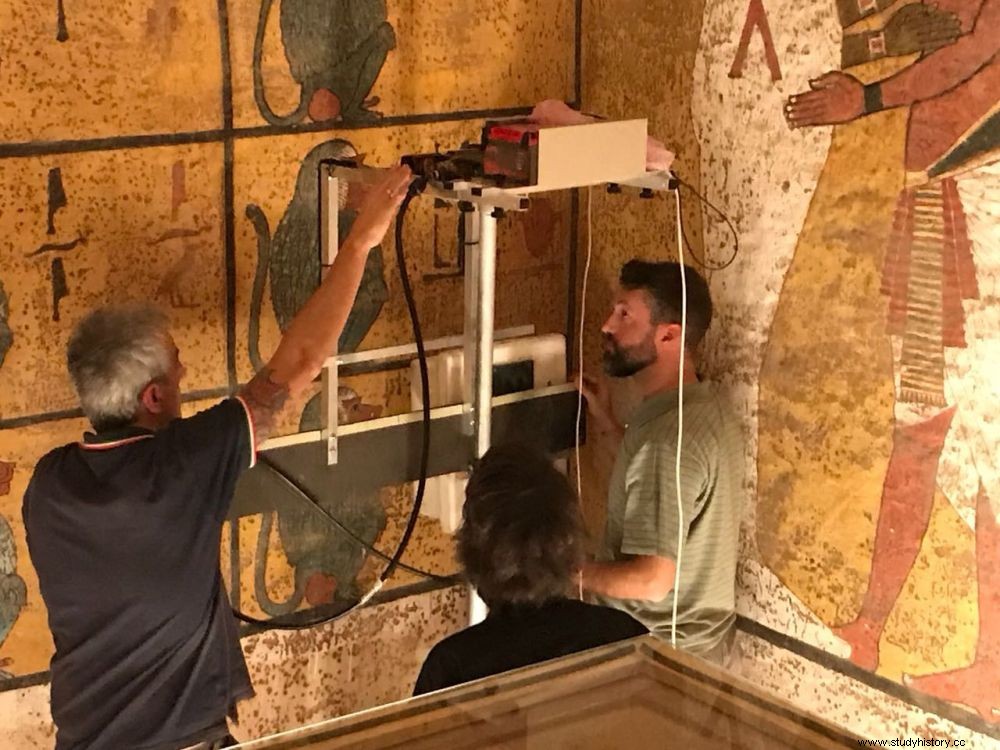End of the mystery! The results of the latest radar tests carried out in the tomb of Tutankhamun, in the Valley of the Kings in Egypt, belie any possibility of hidden cavities.

An Italian team tries to unravel the mysteries of Tutankhamun's tomb
The news fell from Cairo. And it is without appeal! No unknown or concealed parts have been found near or inside the hypogeum of Pharaoh Tutankhamun (KV62), in the Valley of the Kings, near Luxor, Egypt. Francesco Porcelli, from the Polytechnic University of Turin (Italy), head of the Italian scientific team in charge of the latest radar analyses, could not confirm the information provided by the Japanese Hirokatsu Watanabe in March 2016. At the time , his data, enthusiastically received by the former Egyptian Minister of Antiquities, Mamdouh Eldamaty, had suggested the possible 95% presence of an unknown cavity.
No empty space that could be interpreted as a secret cavity
The results of the latest radar scans were communicated on Sunday, May 6, 2018, from Cairo, the Egyptian capital, by Francesco Porcelli as part of the "Fourth International Tutankhamun Conference", held at the Grand Egyptian Museum (GEM) . The Italian geophysicist thus explained that the multiple GPR (ground penetrating radar) analyzes carried out in recent months along the walls of Tutankhamun's burial chamber had not revealed any marked discontinuity on the walls, nor anything that could suggest the presence of an artificial door lintel. No empty space that could be interpreted as a secret cavity has been detected behind the north and west painted walls. In conclusion, the hypothesis formulated by the British Egyptologist Nicolas Reeves, in 2015 "regarding the existence of a hidden chamber or corridors adjacent to the tomb of Tutankhamun is not supported by GPR data" , concluded the Italian expert.
An end to three years of twists
This outcome puts an end to three years of twists and turns, concerning the possible presence of an unknown chamber in the hypogeum of Tutankhamun. The idea put forward by Egyptologist Nicholas Reeves, a specialist in the Eighteenth Dynasty, had been that in the face of the sudden death of the child-king who died at the age of 19, no burial having been prepared for him, the priests would have buried the young pharaoh in a tomb which was not intended for him:in this case, that supposedly of Queen Nefertiti, the royal wife of the pharaoh Akhenaten, his father.
These final ground-penetrating radar scans are the third to have been conducted at the famous royal burial ground. They were decided by the Egyptian authorities in order "to stop the controversy caused by the contradictory results of two previous radar studies carried out by Japanese and American scientific teams" , as well as the media frenzy that followed. In addition to the experts from the University of Turin, the team of specialists who intervened in the royal tomb was made up of two geophysicists from the private companies Geostudi Astier, from Livorno (Italy), as well as from 3DGeoimaging, from Turin (Italy).
